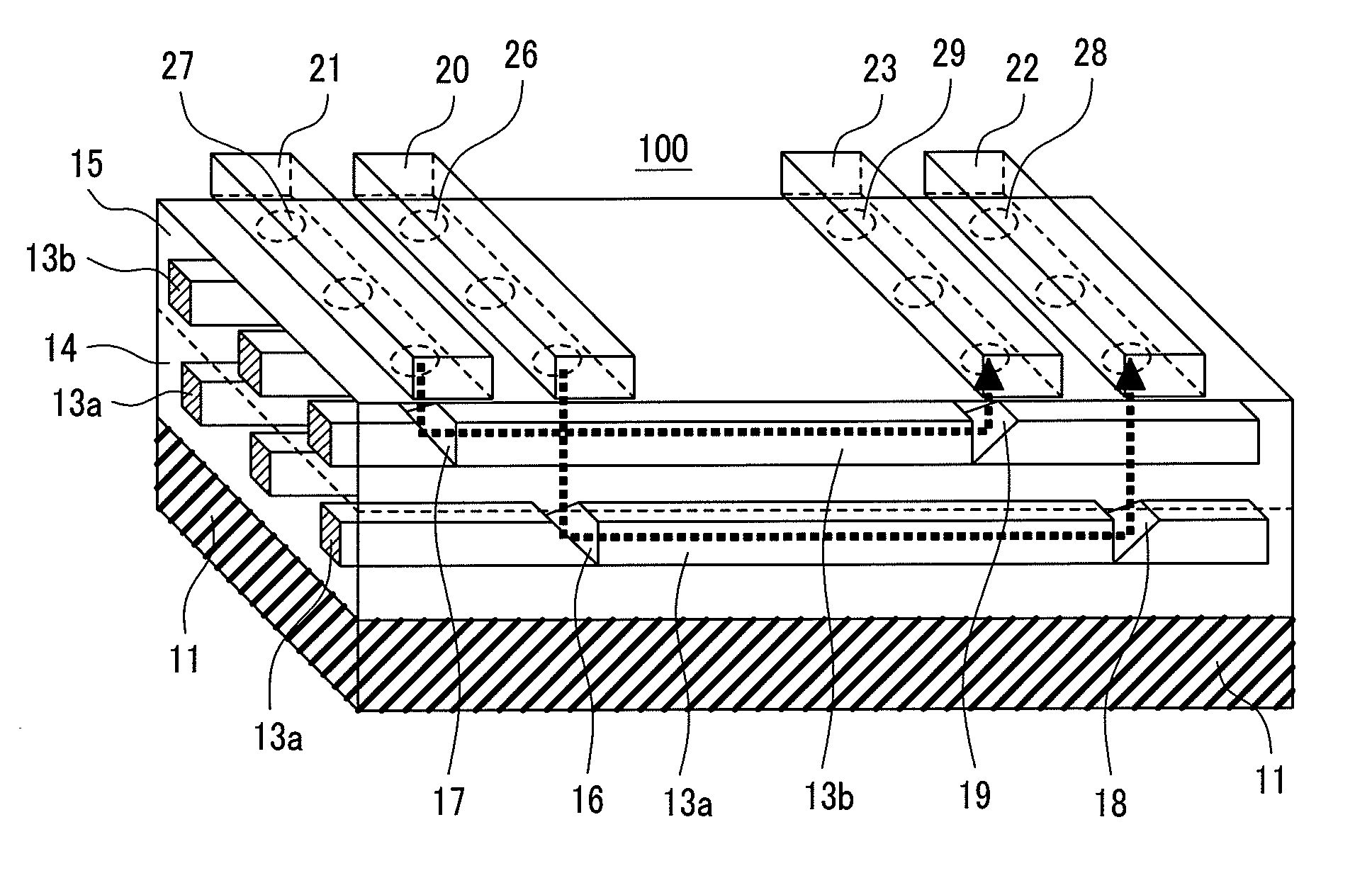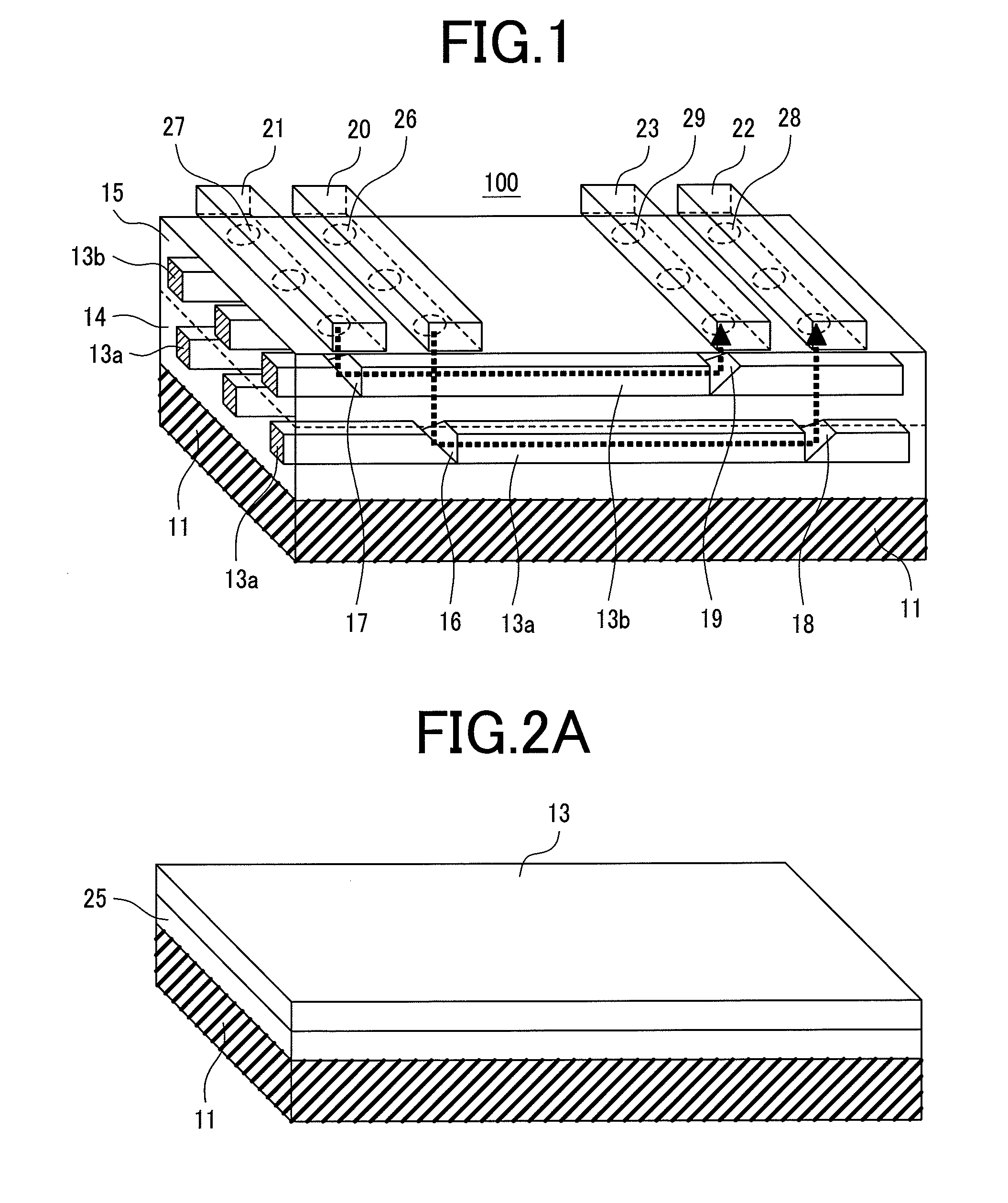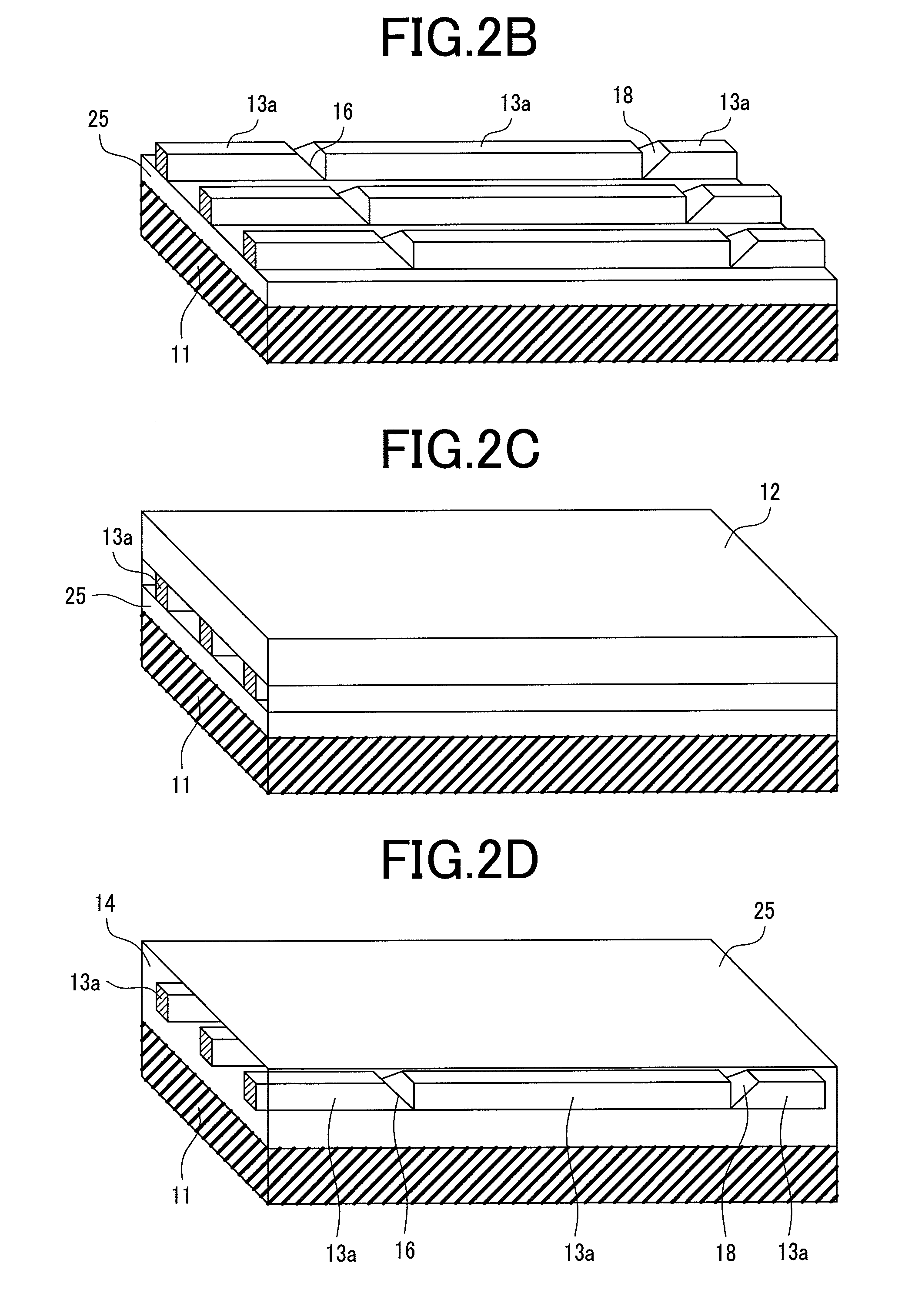Optoelectronic integrated circuit board and communications device using the same
an optoelectronic integrated circuit and optical coupling technology, applied in the direction of optical elements, instruments, semiconductor lasers, etc., can solve the problems of increasing the number of wirings and the seriousness of crosstalk between wirings, and achieves high refractive index, suppressed light beam spread, and high accuracy positioning of optical devices
- Summary
- Abstract
- Description
- Claims
- Application Information
AI Technical Summary
Benefits of technology
Problems solved by technology
Method used
Image
Examples
first embodiment
[0015]FIG. 1 is a perspective view illustrating an optoelectronic integrated circuit board 100 according to a first embodiment of the present invention. A board 11 is prepared with glass epoxy, ceramics, and the like. A configuration of the board 11 is two-layered and includes a first optical waveguide layer 14 having a plurality of cores 13a each having a high refraction index and embedded by a cladding layer, and a second optical waveguide layer 15 formed on the first optical waveguide layer having a plurality of cores 13b each having a high refractive index and embedded by a cladding layer, the first and second optical waveguide layers arranged on the substrate 11. The core 13a and the core 13b are positioned at the same position in the vertical direction. Mirrors 16 and 18, and mirrors 17 and 19 are arranged in the cores 13a and 13b which are respectively included in the optical waveguide layers 14 and 15. As illustrated in the figure, reflection surfaces of the mirrors 16 and 1...
second embodiment
[0028]FIG. 4 is a perspective view illustrating an optoelectronic integrated circuit board 200 according to a second embodiment of the present invention. In the optoelectronic integrated circuit board 200, different from the optoelectronic integrated circuit board 100, the mirrors 16, 18 of the core 13a located at a position further from a top surface of the optoelectronic integrated circuit board 200 and the core 13b through which light passes when transmitted and received to and from an optical device on the top surface of the optoelectronic integrated circuit board 200 are separated and isolated from each other in each light path. Because of the configuration, propagated light in the vertical direction is more tightly blocked in the separated and isolated isolation cores 13b1, 13b2, which enables realization of highly efficient optical coupling performance. Also in this embodiment, a path of light propagated through the cores 13a, 13b is represented by a broken line like in FIG. ...
third embodiment
[0034]FIG. 7 is a cross-sectional view illustrating a optoelectronic integrated circuit board 300 according to a third embodiment of the present invention. In the example shown in FIG. 7, a two-layered optical waveguide comprising a first optical waveguide 14 and a second optical waveguide 15 is laminated on a substrate 11 like in the first and second embodiments described above, and then a third optical waveguide 40 is laminated on the two-layered optical waveguide by the same technique as described in relation to FIG. 2E, and FIG. 2F. In the third optical waveguide layer 40, a core 13c, mirrors 41 and 42, a tapered isolated cores 13c1, 13c2, 13c3 and 13c4 each separated from the core 13c are formed. These components can be formed by the same technique as that employed for preparing the tapered and isolated cores 13b1 and 13bs separated from the core 13 in the second optical waveguide. The mirror 16 in the optical waveguide layer 40, the separated and isolated tapered core 13b1 of ...
PUM
 Login to View More
Login to View More Abstract
Description
Claims
Application Information
 Login to View More
Login to View More - R&D
- Intellectual Property
- Life Sciences
- Materials
- Tech Scout
- Unparalleled Data Quality
- Higher Quality Content
- 60% Fewer Hallucinations
Browse by: Latest US Patents, China's latest patents, Technical Efficacy Thesaurus, Application Domain, Technology Topic, Popular Technical Reports.
© 2025 PatSnap. All rights reserved.Legal|Privacy policy|Modern Slavery Act Transparency Statement|Sitemap|About US| Contact US: help@patsnap.com



